VERY RARE 1944 “SPECIAL MAP” Battle of Leyte Gulf Philippines Invasion Map
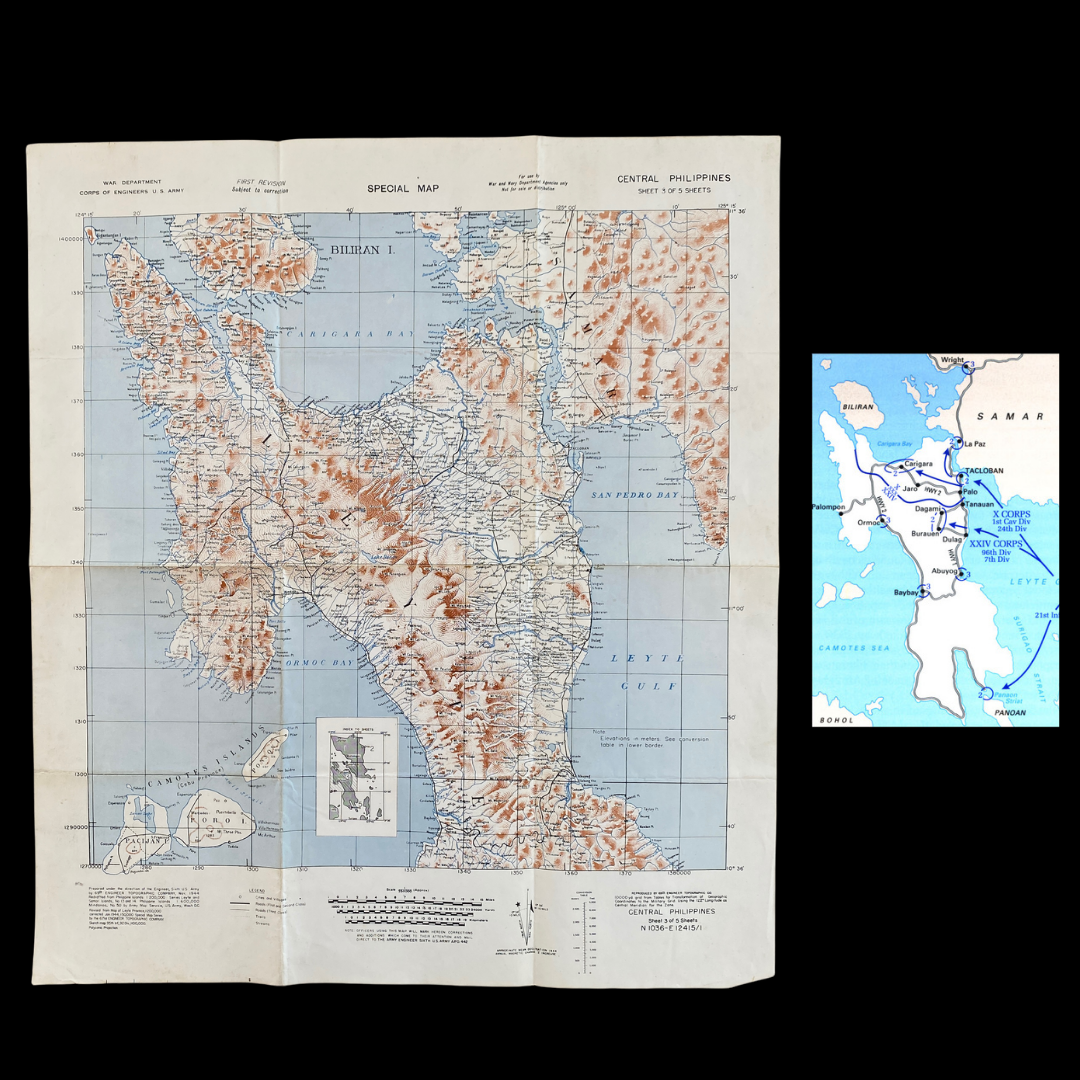





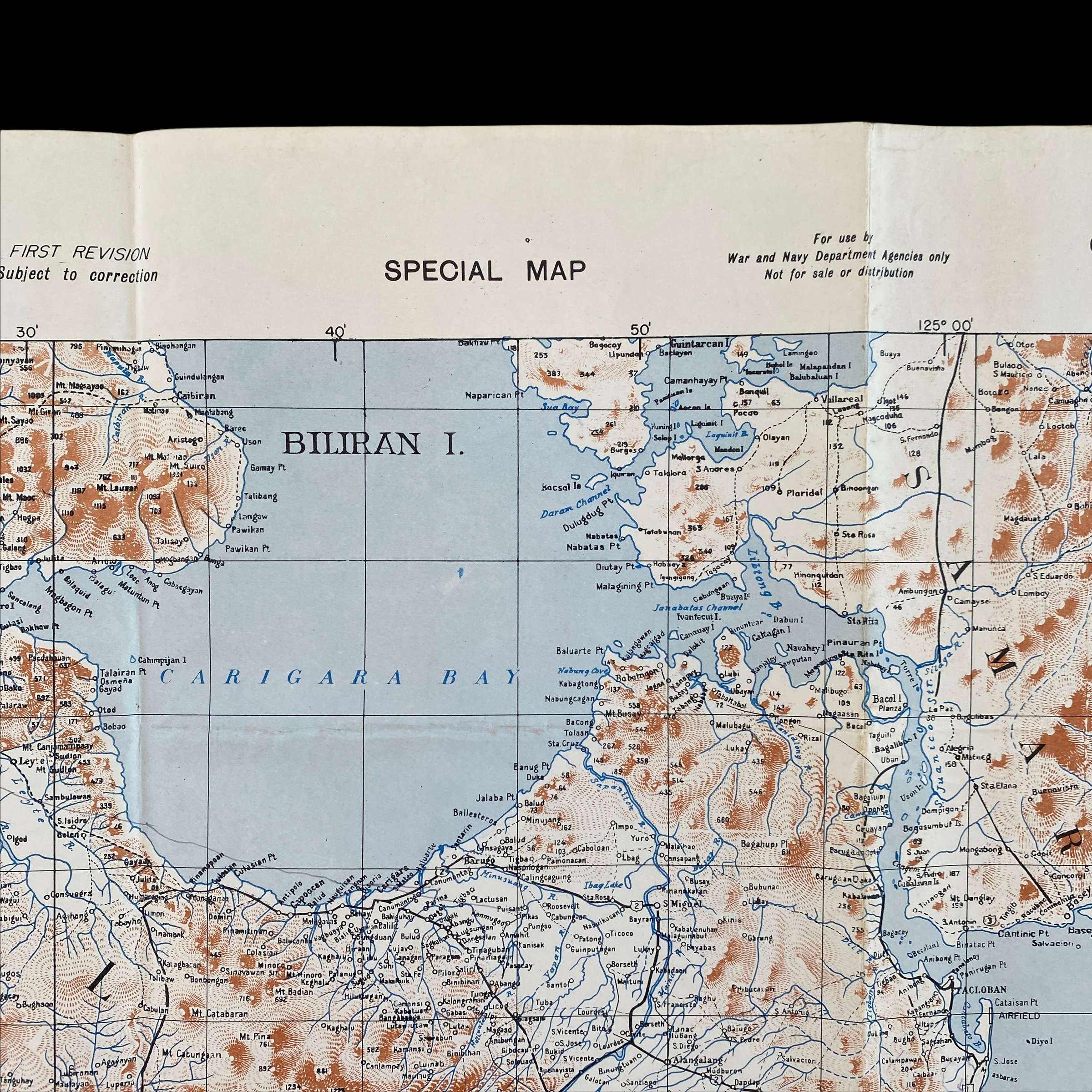
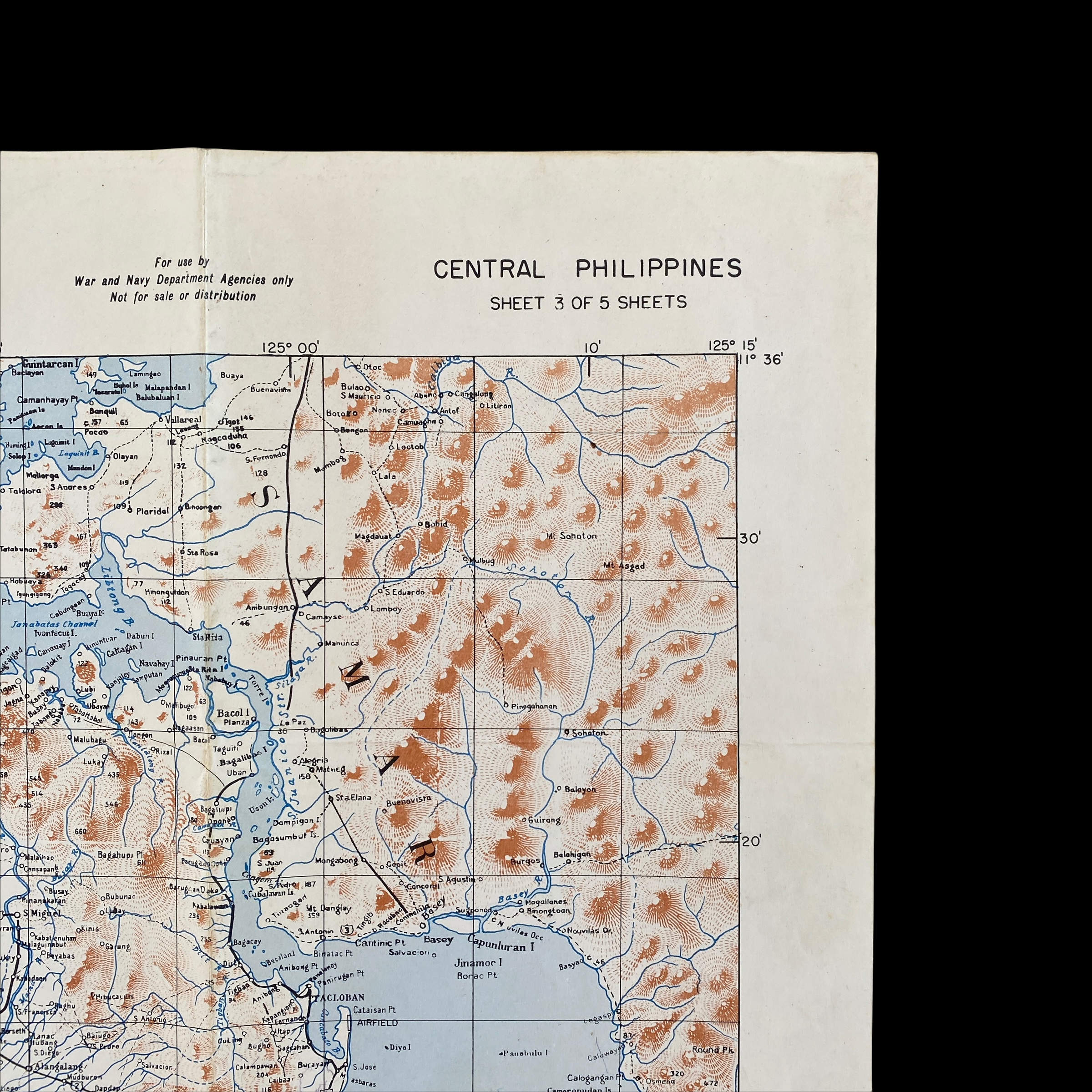
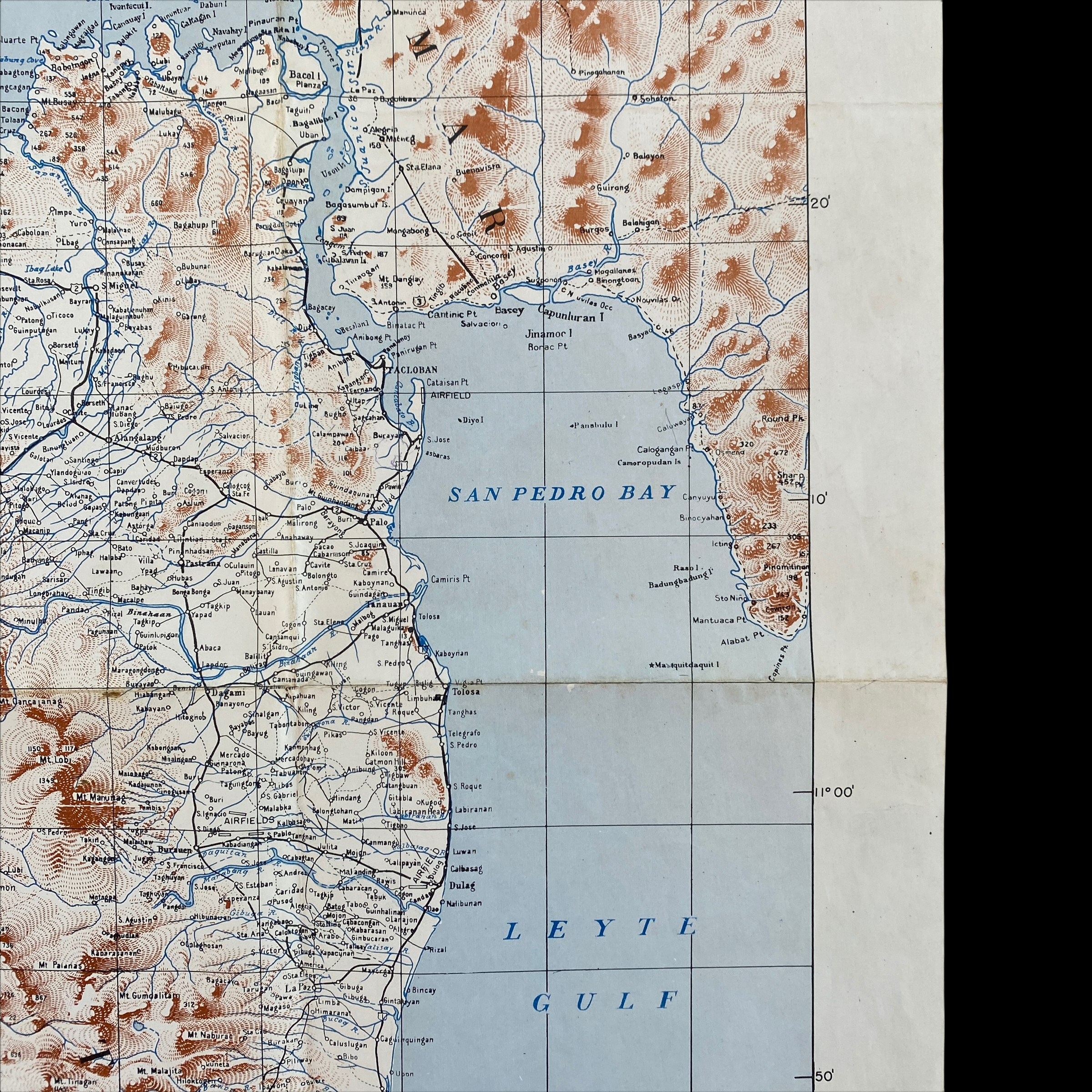

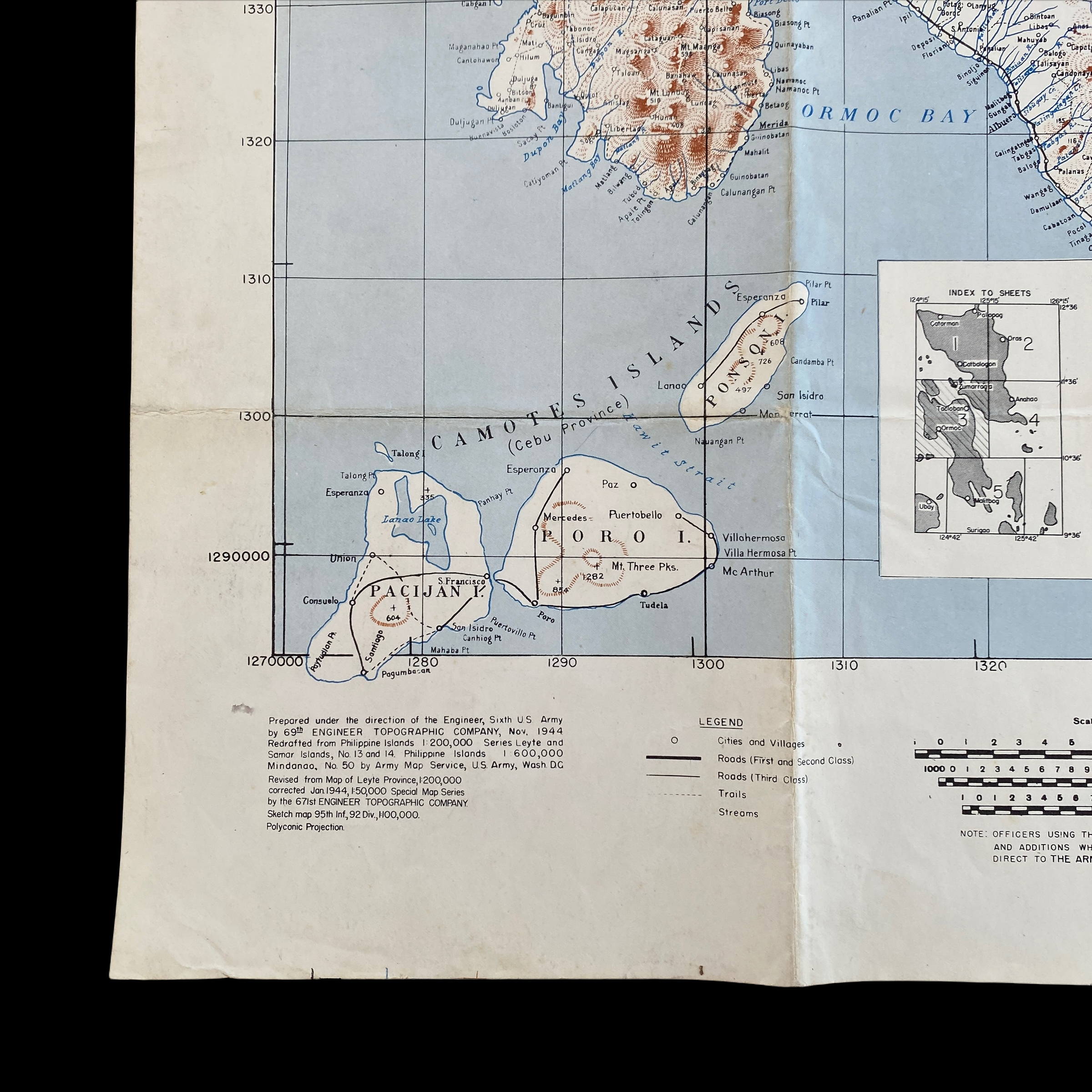
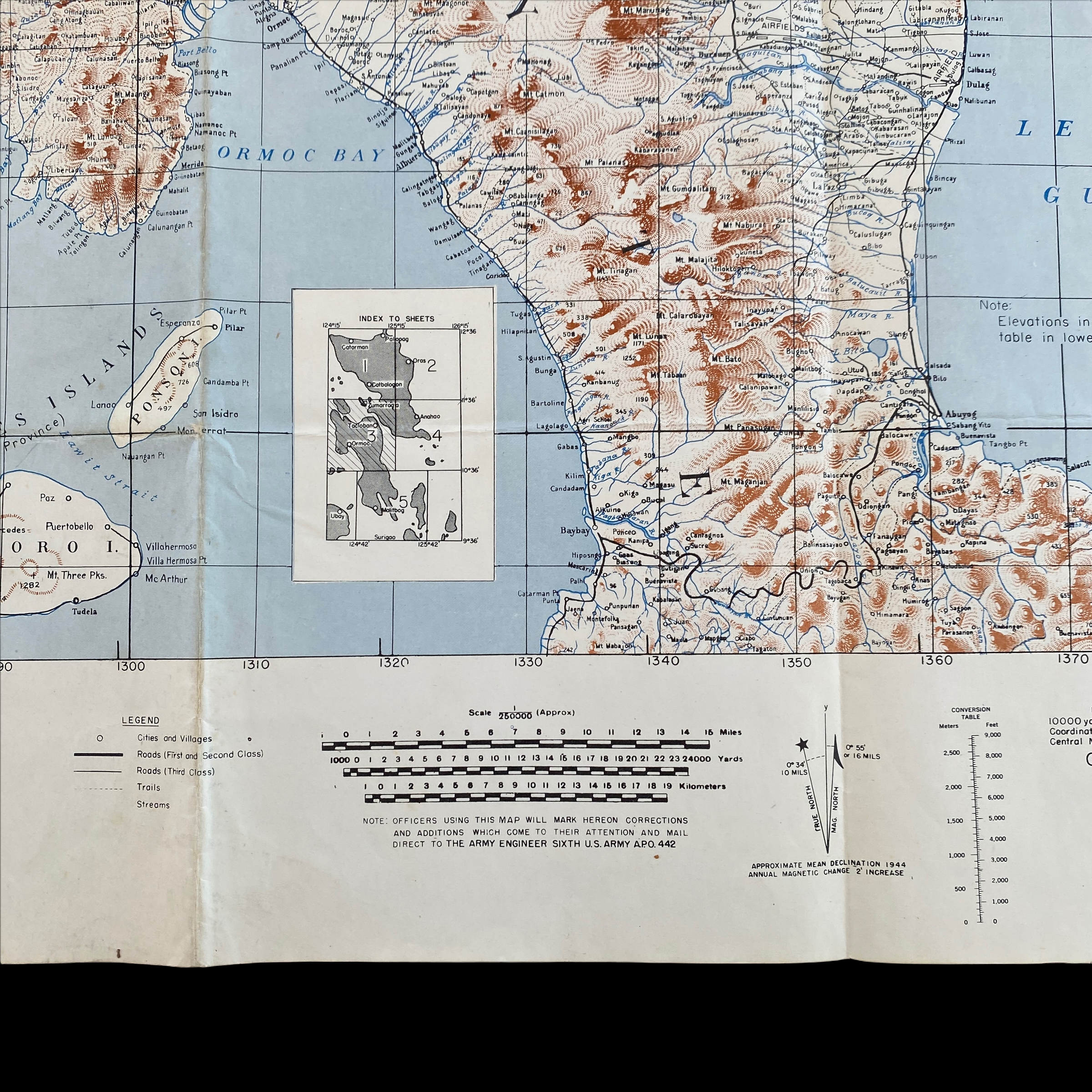
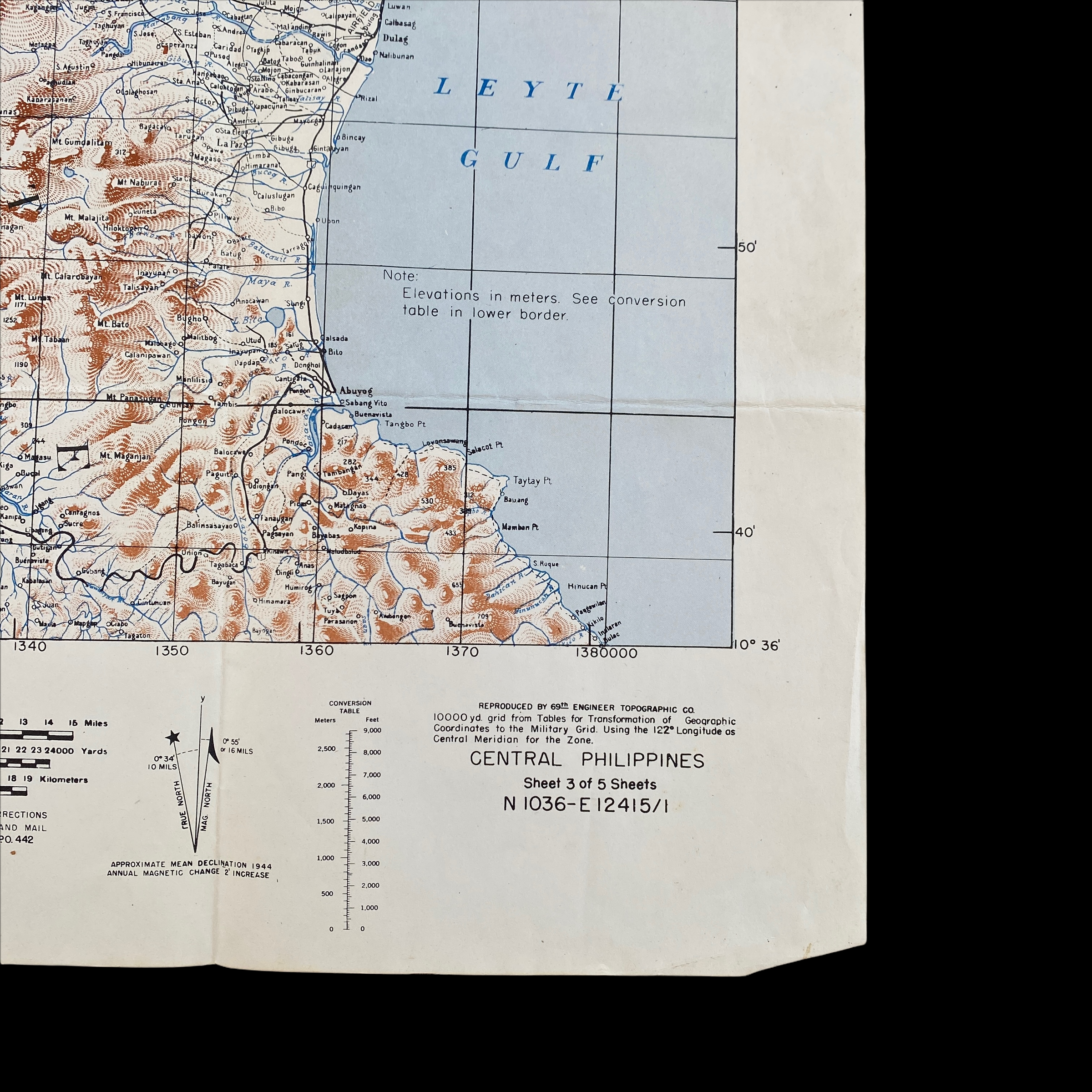
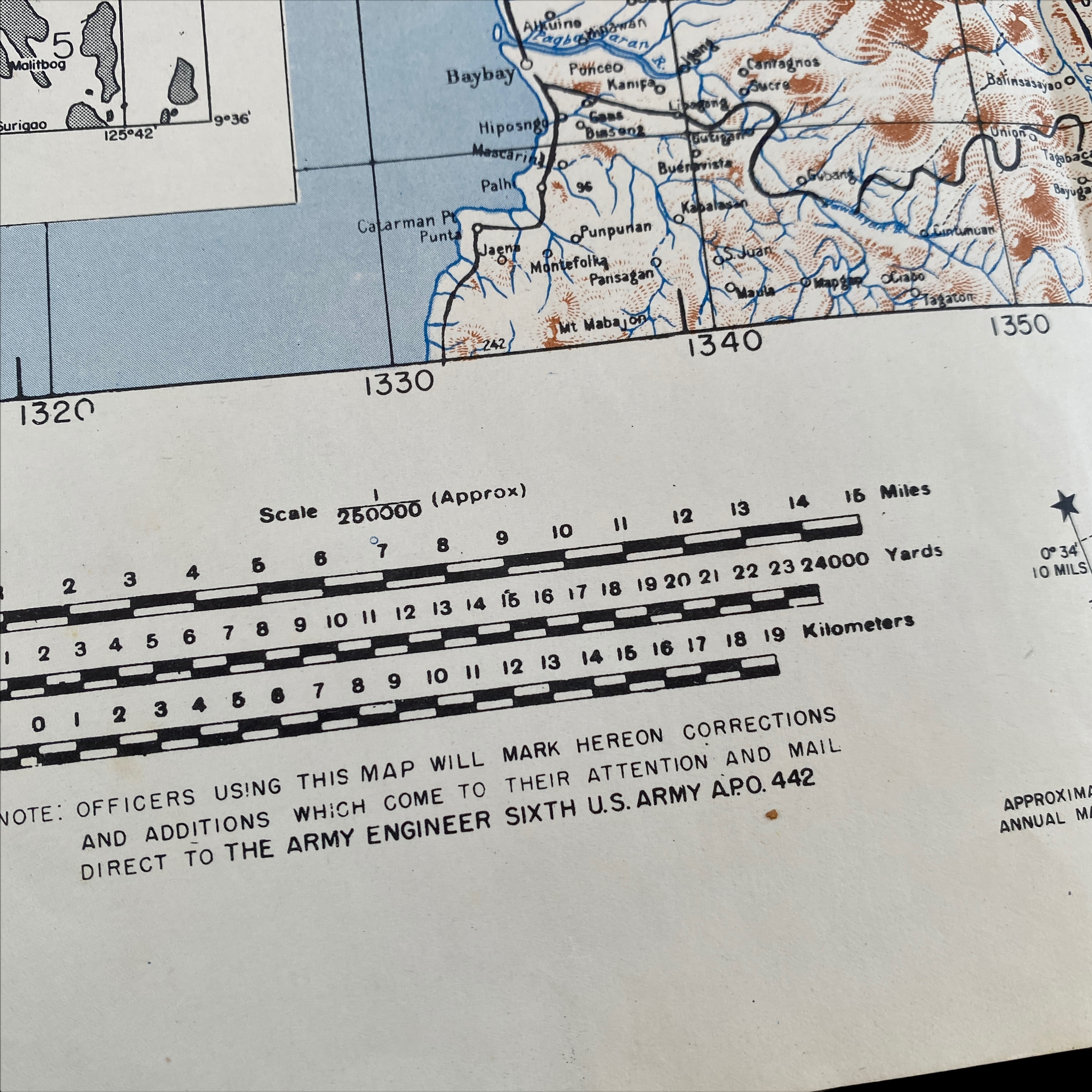
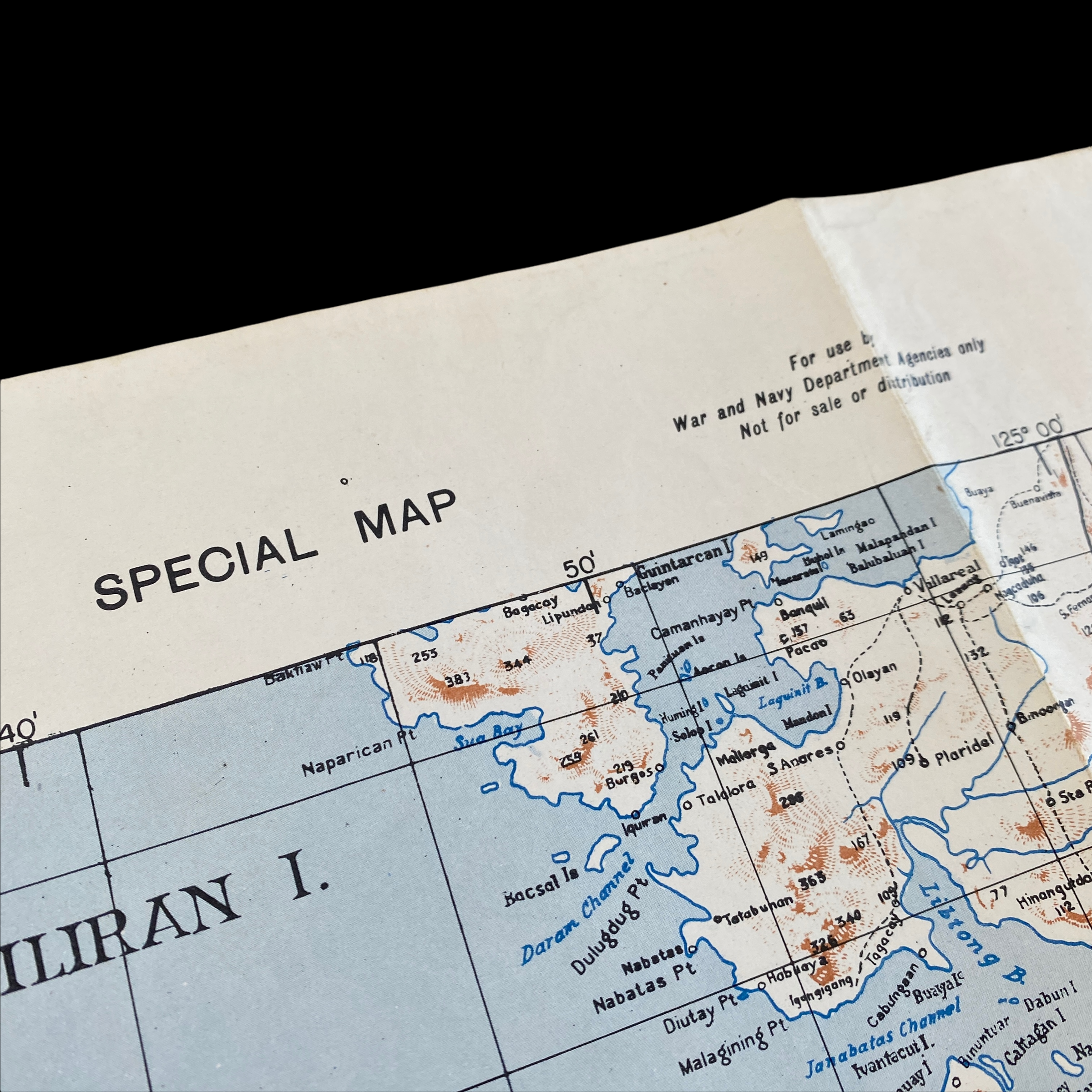
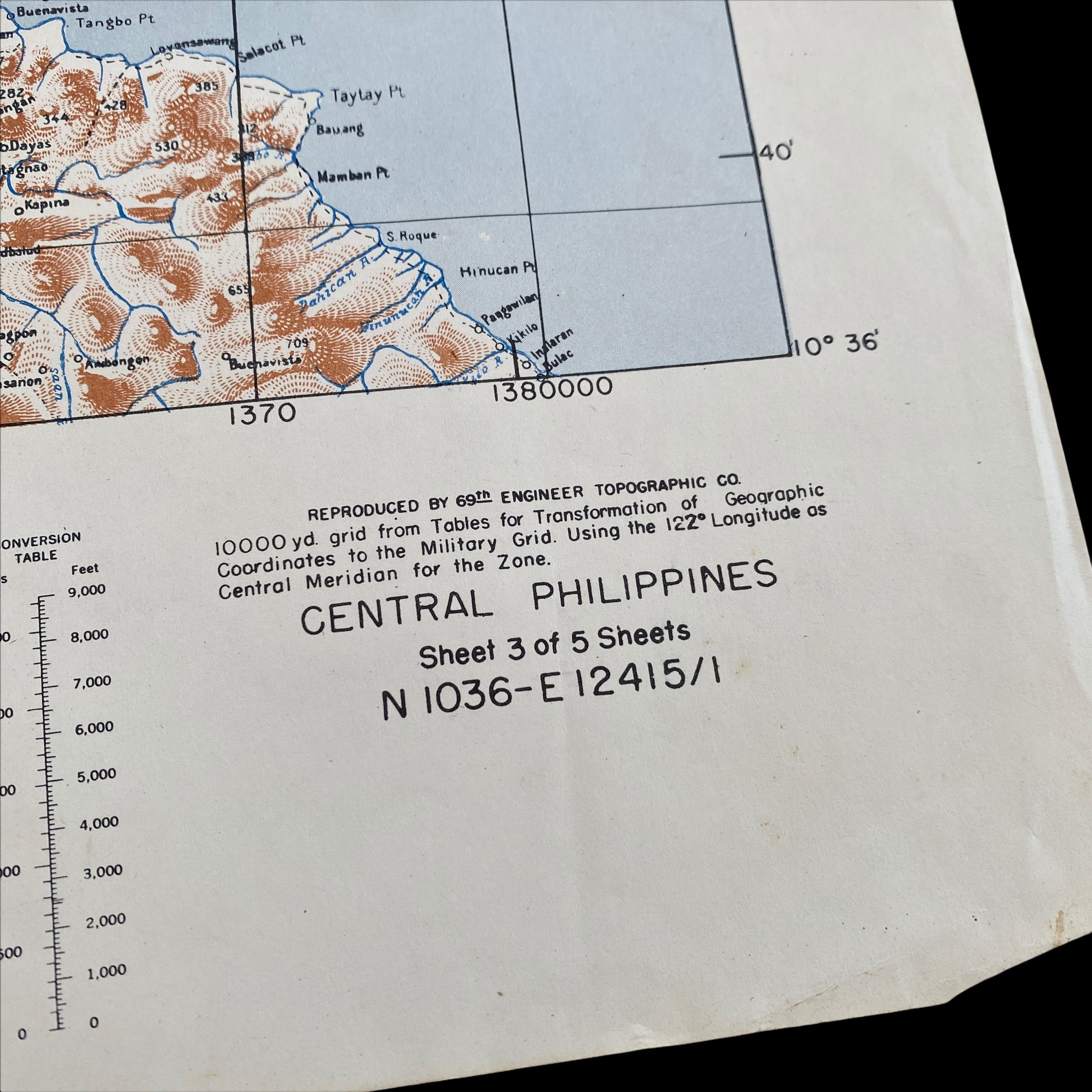
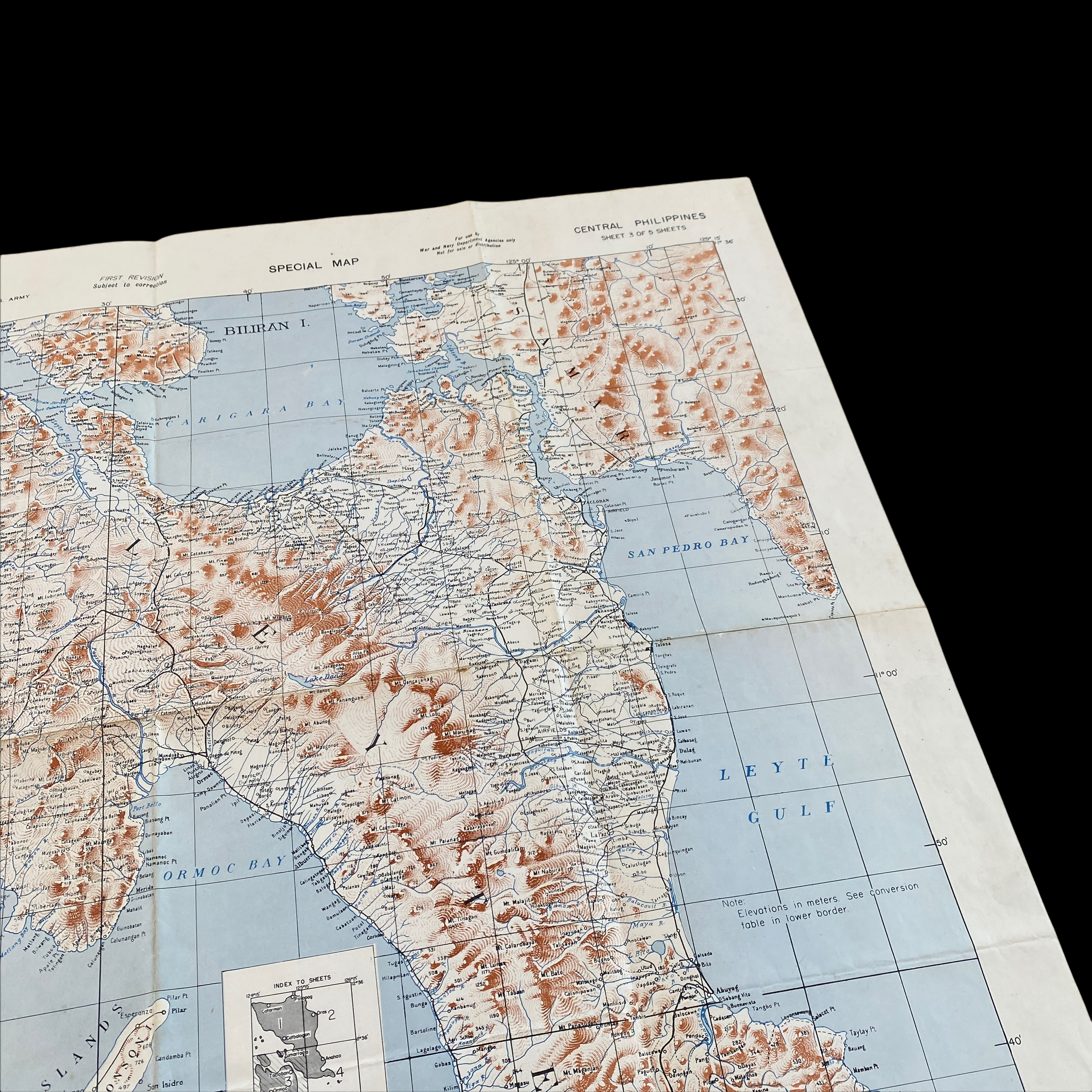
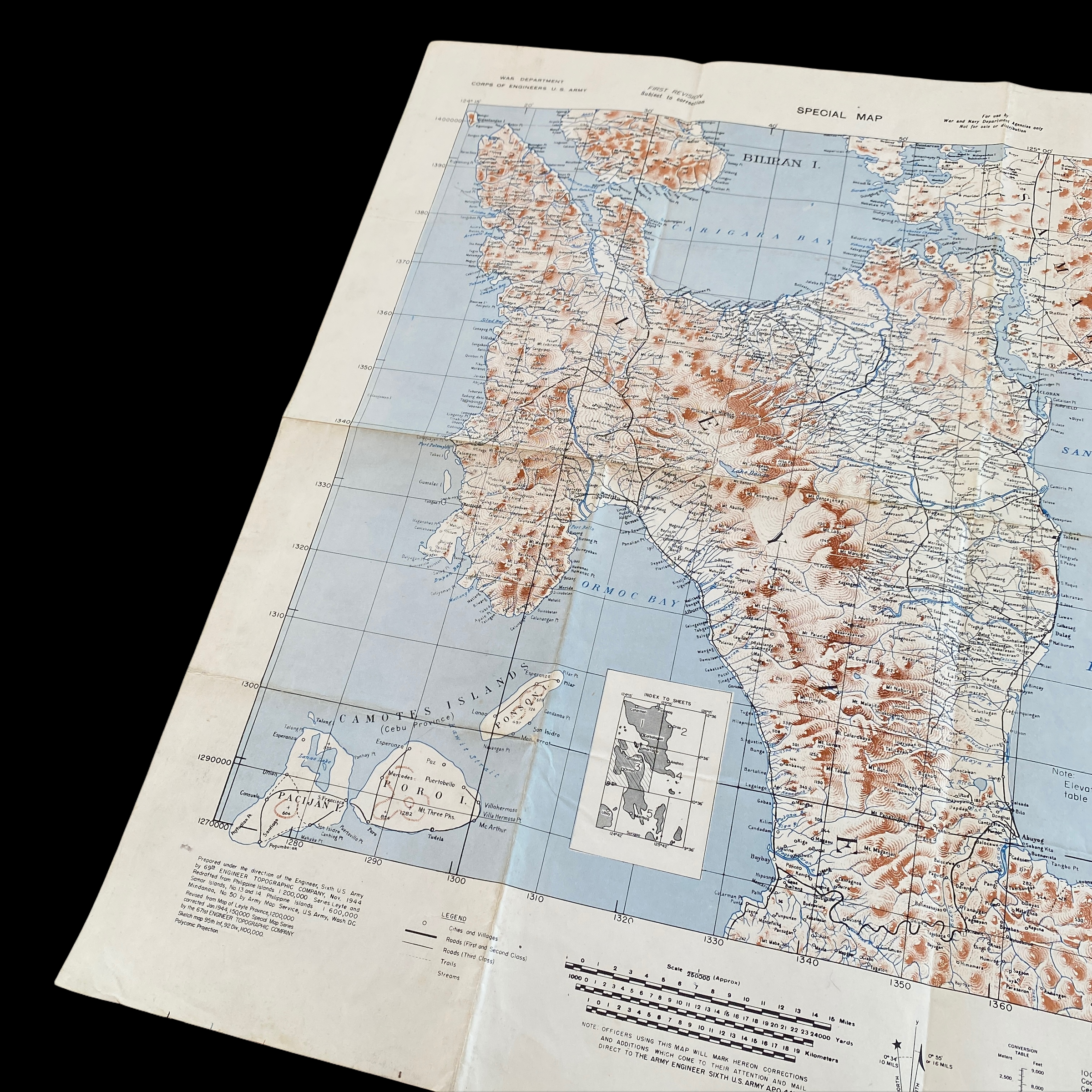

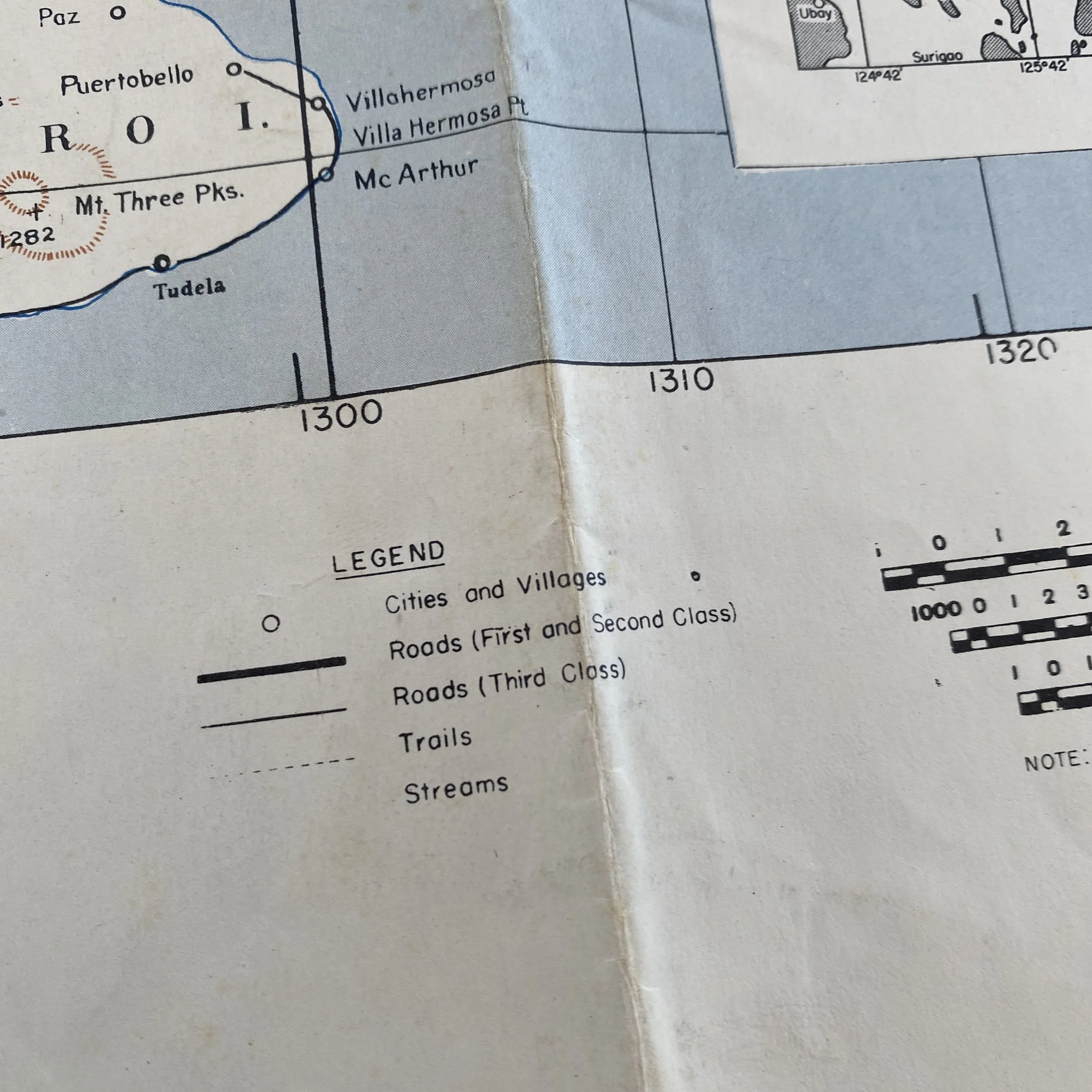
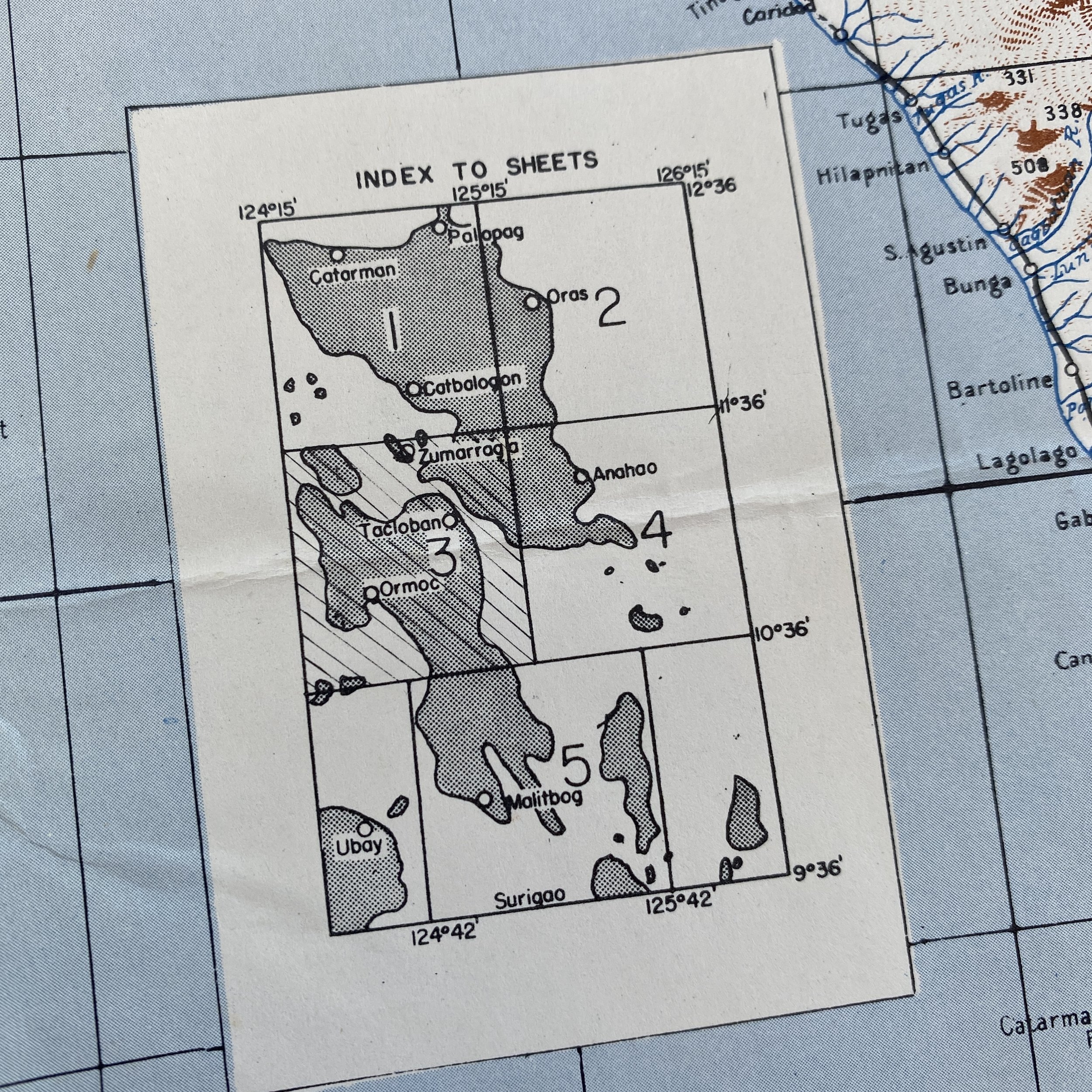

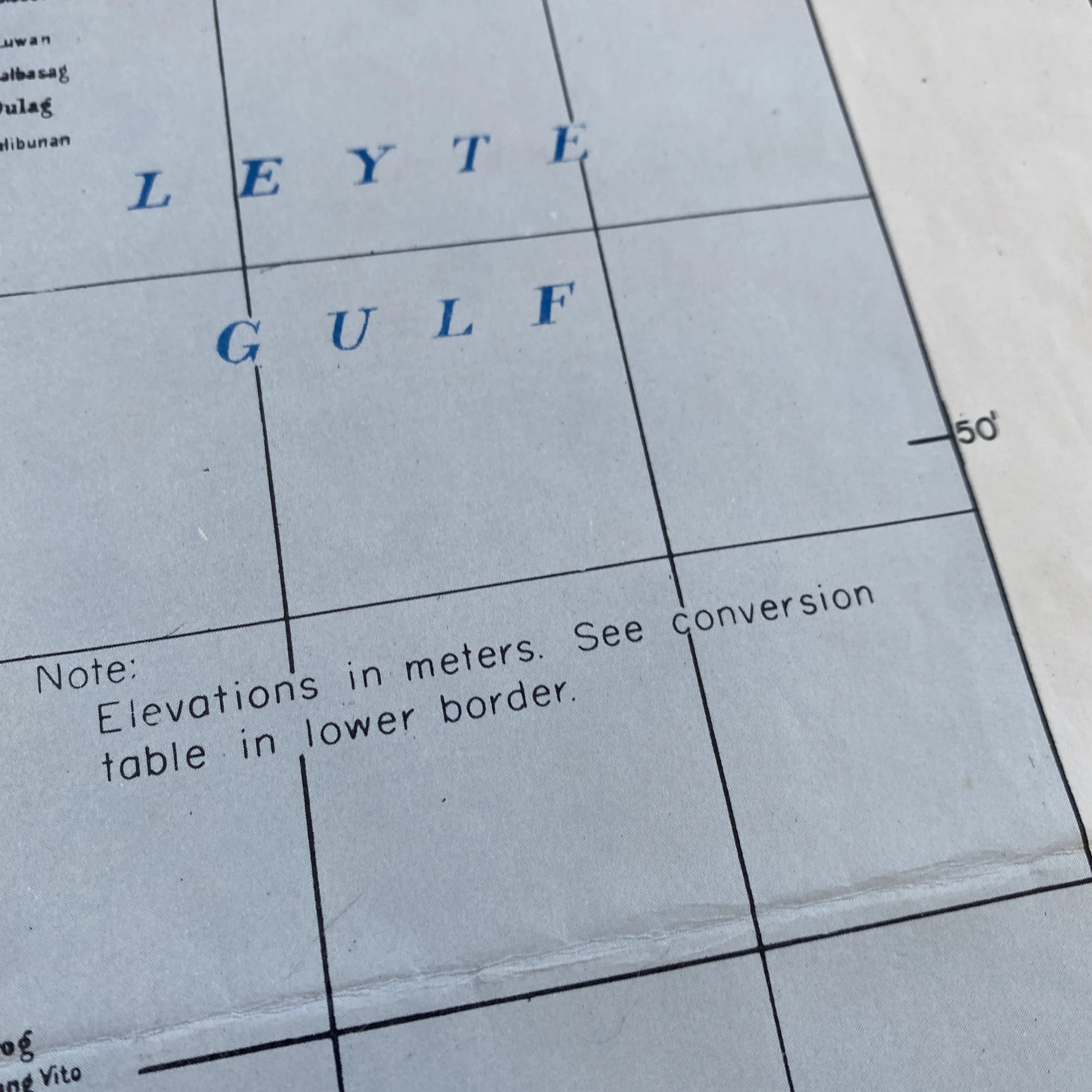







VERY RARE 1944 “SPECIAL MAP” Battle of Leyte Gulf Philippines Invasion Map
Comes with C.O.A.
This incredible and very rare invasion edition “SPECIAL MAP” is a scarce “FIRST REVISION” of the ‘Central Philippines’. Following STAGE 1 of the initial invasion of Leyte, this map was specially produced and used in Leyte combat operations for PHASE 2 & PHASE 3 following the initial amphibious D-Day landings on October 20th, 1944 in the San Pedro Bay and lower Leyte Gulf. This map was crucial to the advance towards the Ormoc Valley, battles of Breakneck and Kilay Ridges, Battle of Shoestring Ridge, Battle of the Ridges, Battle of the Airfields, Fall of Ormoc, and the Westward advance to the coast.
The plan for the ground operations in the capture of Leyte comprised four main phases. Phase One covered minor preliminary landings to secure the small islands lying across the entrance to Leyte Gulf. Phase Two included the main amphibious assaults on Leyte from Dulag to Tacloban and called for the seizure of the airstrip, an advance through Leyte Valley, and the opening of San Juanico and Panaon Straits. Phase Three consisted of the necessary overland and shore-to-shore operations to complete the capture of Leyte and the seizure of southern Samar. Phase Four contemplated the occupation of the remainder of Samar and the further neutralization of enemy positions in the Visayas.
In October of 1944, the largest mass of naval assault craft and warships ever concentrated in the Pacific sailed boldly into Leyte Gulf. This map not only shows the entire main assault areas on the east coast of Leyte along an 18-mile front between the two small villages of Dulag and San Jose, but it shows the cities, villages, roads, streams, and trials for the later advances on Japanese positions and airfields.
The assault on Leyte marked the joining of the two major advances on Japan—the central Pacific offensive commanded by Nimitz and the southern Pacific approach under MacArthur. MacArthur was given overall command of the Leyte operation, and Nimitz provided strong naval support from the U.S. Pacific Fleet. Adm. William (“Bull”) Halsey’s Third Fleet covered the landings with carrier-based aircraft and guarded against attacks by the Japanese fleet. Preparatory and diversionary carrier strikes preceded the landings: the Ryukyu Islands (including Okinawa) were attacked on October 9–10, northern Luzon on October 11, and Formosa and the Pescadores on October 12–13. Part of the carrier force was struck by Japanese aircraft on October 13–14, and two U.S. cruisers were damaged and forced to retire. Over the following days, U.S. carrier planes responded with attacks on Japanese air bases in Formosa and the northern Philippines, and October 18–19 saw further strikes on targets near the landing beaches.
The campaign for Leyte proved the first and most decisive operation in the American reconquest of the Philippines. Japanese losses in the campaign were heavy, with the army losing four divisions and several separate combat units, while the navy lost 26 major warships and 46 large transports and hundreds of merchant ships. The struggle also reduced Japanese land-based air capability in the Philippines by more than 50%. Some 250,000 troops still remained on Luzon, but the loss of air and naval support at Leyte so narrowed Gen. Yamashita's options that he now had to fight a passive defensive of Luzon, 325 the largest and most important island in the Philippines. In effect, once the decisive battle of Leyte was lost, the Japanese gave up hope of retaining the Philippines, conceding to the Allies a critical bastion from which Japan could be easily cut off from outside resources, and from which the final assaults on the Japanese home islands could be launched.